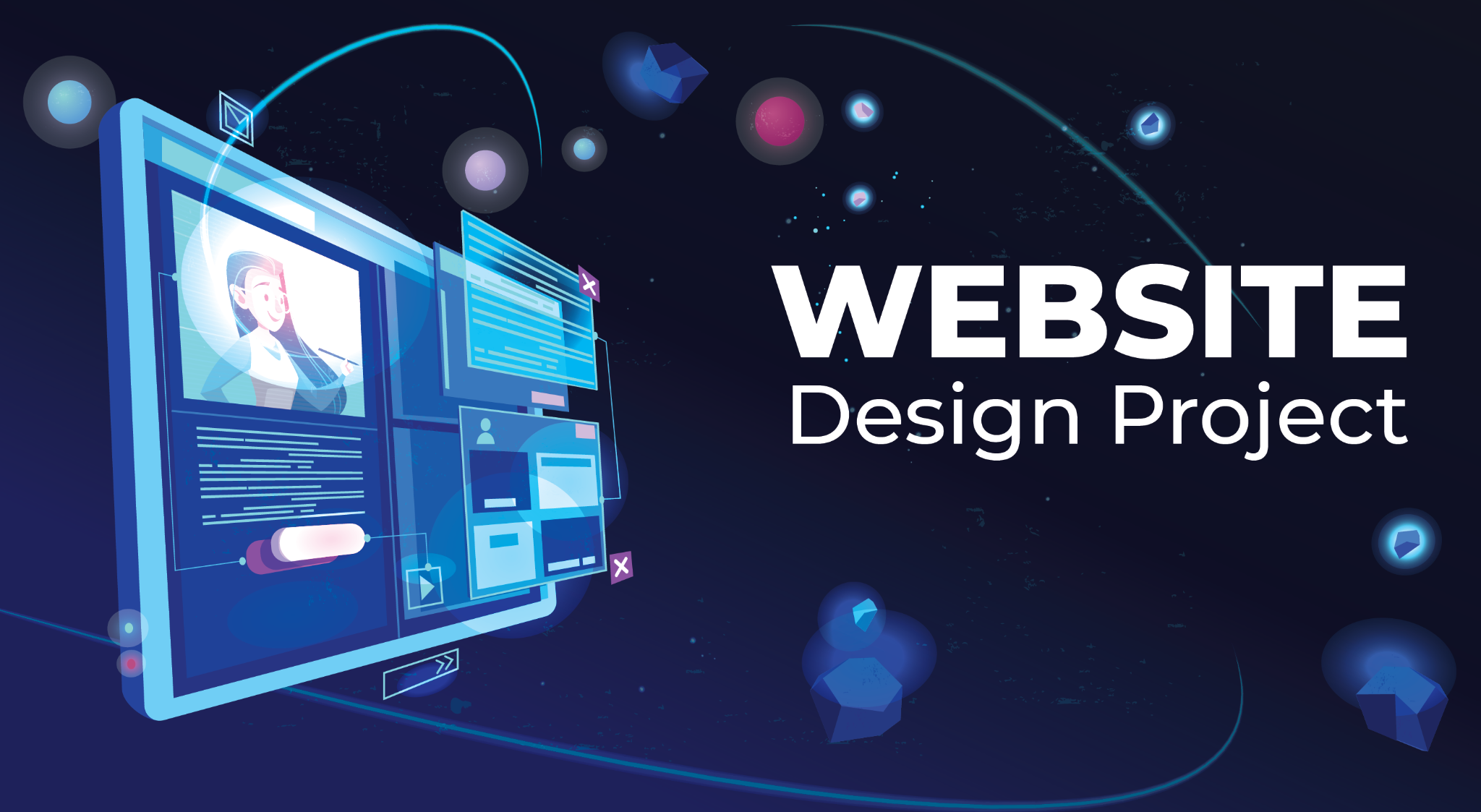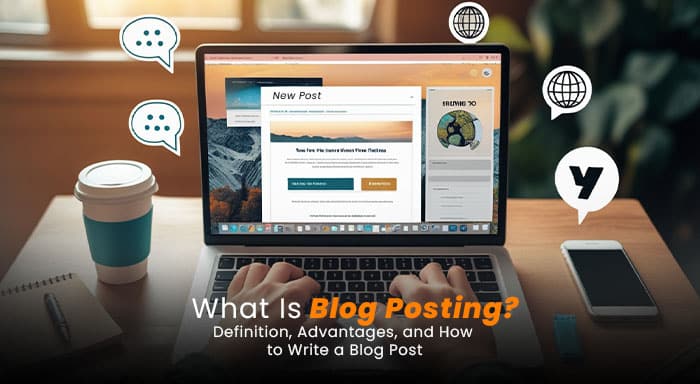Web design is evolving immensely with the most emerging platforms like Elementor since Elementor has been becoming the backbone of modern website creation. Whether you’re launching a new business, revitalizing an existing one, or integrating Laravel Development services for more complex web applications, a captivating design is crucial. With the advance features like flexibility, ease of use, and endless possibilities for creativity, Elementor, a WordPress plugin, has become a go-to tool for web designers. If you're looking for inspiration for your next web design project, Elementor should be your first choice, and look at little down to know why.
Why Choose Elementor for Your Web Design Project?
Elementor has gained most popularity for its practical functionalities such as drag-and-drop, responsive designs, and advanced customization options, and other features. Here’s why Elementor can be a game-changer for your next project:
- User-Friendly Interface: Elementor allows even novice designers to create professional-looking websites without needing to write a single line of code.
- Pre-designed Templates: The plugin provides a range of pre-designed templates that can jumpstart your creativity.
- Customizability: With Elementor, every part of your website, from headers to footers, can be customized to align with your brand’s identity.
- Responsive Design: Elementor ensures your website looks great on any device, whether it's a desktop, tablet, or smartphone.
- Advanced Integration: Integrate easily with other tools, such as CRM solutions like Outright Systems’ SuiteCRM or SugarCRM.
1. Modern Minimalism: Less is More
When thinking of inspiration for your next web design project, modern minimalism is a powerful theme to consider. Minimalism emphasises simplicity, clear structure, and uncluttered design. With Elementor, you can easily implement minimalist design principles to create clean, intuitive websites.
Key Features in Elementor for Minimalist Design:
- Whitespace Management: You can control the spacing between elements effortlessly.
- Elegant Typography: Choose from a wide range of fonts and adjust their sizes, weights, and line heights.
- Lightweight Elements: Add images, icons, and forms without overloading the page with unnecessary elements.
Example
Imagine a sleek homepage with a simple yet elegant header, clear call-to-action buttons, and just the right amount of text to inform the visitor. A quick, laser-focused, and polished-looking website is the ultimate product.
2. Dynamic One-Page Websites: Fluid and Engaging
There is no doubt that the rise of one-page websites has been remarkable, particularly for portfolios, landing pages, and small businesses. These websites offer fluid user experiences where all content is accessible by simply scrolling down. Elementor’s drag-and-drop builder makes creating stunning one-page websites incredibly easy.
Key Features for One-Page Design in Elementor:
- Anchor Menus: Set up smooth scrolling navigation that directs users to specific sections of your page.
- Advanced Motion Effects: Elementor allows you to animate your website elements, creating a more interactive experience for your users.
- Custom Section Layouts: Arrange your sections in a way that leads your visitors through your story step-by-step.
Example
A one-page site for a photography business might start with an eye-catching hero image, followed by service descriptions, a portfolio gallery, customer testimonials, and a contact form. In addition to this, just by utilizing the intuitive design tools of the Element platform, you can achieve all of this.
3. E-commerce Focused Designs: Sell with Style
If you're building an online store, Elementor offers full integration with WooCommerce, enabling you to design e-commerce websites that convert. You can create engaging product pages, user-friendly checkout processes, and stunning galleries to showcase your products.
Key Features in Elementor for E-commerce:
- WooCommerce Builder: Design custom product pages, category pages, and checkout forms with Elementor’s WooCommerce integration.
- Product Catalogues: Display your products in beautiful, organized grids or lists.
- Call to Action Buttons: Encourage users to take action with customizable buttons that align with your branding.
Example
Think of a custom clothing store that wants to highlight its limited-edition collections. With Elementor, you can create visually striking product showcases, integrate upselling and cross-selling features, and build a seamless user experience from landing on the homepage to finalizing a purchase.
4. Interactive Portfolios: Showcasing Your Work in Style
For creative professionals like photographers, designers, or artists, having an eye-catching portfolio is essential. Elementor’s flexibility allows you to design interactive portfolios that leave a lasting impression on potential clients or employers.
Key Features for Portfolios:
- Image Sliders and Galleries: Showcase your work in beautiful, customizable image grids or carousels.
- Hover Effects: Add subtle hover animations to grab attention without distracting from your content.
- Custom Fonts and Colors: Maintain consistent branding while making your portfolio stand out visually.
Example
A web designer might use Elementor to create a portfolio with engaging image galleries that feature hover animations, dynamic loading effects, and project descriptions, all while maintaining a clean and modern aesthetic.
5. The Power of Bold Typography and Imagery
Typography and imagery are essential elements that can make or break a website design. Elementor offers the tools to elevate these design aspects, helping you create visually engaging websites.
Key Features for Typography and Imagery:
- Font Customization: Access to Google Fonts, Adobe Fonts, and other libraries for full customization.
- Background Overlays: Layer images with color overlays and text to create depth and interest.
- Parallax Effects: Create eye-catching sections that move dynamically as users scroll.
Example
A marketing agency could create a website using bold typography in conjunction with engaging imagery to communicate its message. By using Elementor's parallax effects and custom typography options, the agency could create a visually stunning homepage that captures the audience's attention.
6. Blogging with Style: Content-First Design
For bloggers, Elementor provides a wide range of options to design blogs that are not only functional but also visually captivating. Whether you're a personal blogger or running a business blog, Elementor’s capabilities allow you to create content-focused layouts.
Key Features for Blogging:
- Customizable Blog Layouts: Choose from a variety of blog post layouts, including grid, masonry, and list styles.
- Post Widgets: Use widgets like “Recent Posts” or “Featured Posts” to engage your readers.
- Comment Integration: Easily integrate commenting features to encourage interaction on your blog.
Example
A food blogger might design their blog with a grid layout that showcases their recipes with large, high-quality images, followed by an easy-to-navigate content structure that encourages readers to leave comments and share posts.
7. Multi-language and Multi-Domain Websites
If your project requires a multi-language website or you’re targeting audiences from different regions, Elementor makes this easy. Elementor supports all major multilingual plugins like WPML, allowing you to design and manage multi-language websites effortlessly.
Key Features for Multi-Language Design:
- Seamless WPML Integration: Elementor works flawlessly with the WPML plugin, enabling easy translation of pages and posts.
- Custom Headers and Footers for Different Languages: Customise headers, footers, and navigation menus for each language.
- Country-Specific Pages: Build pages tailored to different geographic regions, each with its unique design and content.
Example
A business with global reach could create a website where each section is tailored to a different country or language. Using Elementor’s multi-language support, the design would ensure that users get a localized experience, regardless of where they are.
8. Inspiration from Element or's Template Library
Sometimes, you just need a starting point to kick off your project. Elementor’s extensive template library offers pre-built templates for virtually any industry or website type. These templates can serve as inspiration for your next web design project or be customized to suit your needs.
Key Features of the Template Library:
- Wide Selection of Templates: From e-commerce to portfolios, Elementor’s library covers all types of websites.
- One-Click Import: Import any template and start customizing immediately.
- Full Customization: While pre-designed, every aspect of the templates can be altered to fit your brand.
Example
If you’re designing a website for a tech company, you could use one of Elementor’s tech-focused templates as your foundation, then customize it with your own branding, content, and imagery to create a unique and professional look.
9. Incorporating Video and Multimedia for Engagement
In today’s digital landscape, video and multimedia elements play a pivotal role in enhancing user engagement and retention. Elementor makes integrating these elements seamless, giving you the tools to create visually dynamic websites.
Key Features for Video and Multimedia:
- Video Backgrounds: Set videos as backgrounds for sections to add movement and life to your design.
- Video Popups: Create lightbox popups to showcase videos without slowing down page loading times.
- Custom Media Carousels: Showcase a combination of images, video clips, and text in a carousel format for an interactive experience.
Example
An online education platform could design a homepage that features a video background, highlighting courses, student testimonials, or behind-the-scenes footage of instructors. Using the video widget feature of the Elementor platform, you can embed data from platforms like YouTube and Vimeo too easily and can ensure their high-quality playback and responsiveness across devices.
10. Creative Use of Color Gradients and Overlays
Elementor’s design flexibility extends into creative use of colours and gradients. By utilising colour gradients, you can add depth and style to your website without overwhelming the user experience. Elementor’s gradient builder allows you to choose two or more colours to transition smoothly between them, adding a modern and sophisticated touch to your website design.
Key Features for Color and Gradients:
- Gradient Backgrounds: Customise sections with smooth, subtle gradients to add aesthetic value without complexity.
- Color Overlays: Add color overlays on images to make text stand out, ensuring readability while maintaining visual appeal.
- Customizable Colour Schemes: Tailor your website's color scheme to match your brand identity, choosing from a wide array of customizable options.
Example
For a lifestyle blog, you might use soft gradients in the header or footer sections to create a calm and inviting atmosphere. Gradients can also be applied to call-to-action buttons, guiding users towards conversion points while maintaining a cohesive design style.
11. Elementor's Pop-Up Builder: A New Approach to Conversion
Pop-ups have long been a crucial part of web design for capturing leads, promoting products, or directing user attention. Elementor’s built-in pop-up builder allows you to create beautifully designed pop-ups without relying on external plugins. You can design and customize every aspect of your pop-ups to match the rest of your website.
Key Features of the Pop-Up Builder:
- Targeted Triggers: Show pop-ups based on user behavior, such as exit intent or scrolling percentage.
- Flexible Design Options: Design pop-ups using Elementor’s visual editor, ensuring they match the look and feel of your site.
- Dynamic Content: Add forms, videos, countdown timers, and more to your pop-ups, making them highly engaging and functional.
Example
A web design agency could create a pop-up offering a free consultation, triggered when visitors scroll 50% down the page or hover over the exit button. This type of dynamic, targeted pop-up can significantly increase conversion rates while maintaining a smooth user experience.
12. Element or's Theme Builder: Full Website Customization
One of Elementor's most powerful tools is the Theme Builder, allowing you to design every aspect of your website. With Theme Builder, you can fully customise global elements such as headers, footers, and sidebars, ensuring consistency across all pages. You no longer have to rely on your WordPress theme’s restrictions—you’re in complete control with Elementor.
Key Features of Elementor’s Theme Builder:
- Custom Headers and Footers: Design unique headers and footers that fit the overall look of your website.
- Dynamic Templates: Create dynamic content areas that automatically update with new posts or products.
- Global Widgets: Use the same design element across multiple pages with a single edit for easier site management.
Example
An online store might use Theme Builder to create a unified look across all product pages and blog posts, ensuring a consistent brand identity throughout. By customising the header to include product categories and a prominent search bar, the shopping experience becomes more intuitive and user-friendly. Similarly, opting for custom WordPress development allows you to seamlessly integrate custom solutions that meet specific business needs, ensuring a fully personalized and high-performing website.
13. Advanced Custom Fields Integration: Data-Driven Design
For businesses that need to display more than just basic content, Elementor’s integration with Advanced Custom Fields (ACF) makes it easy to create data-driven websites. This allows you to pull dynamic content from custom fields into your design, opening the door to unique and highly personalised web experiences.
Key Features for ACF and Elementor Integration:
- Dynamic Content Insertion: Easily insert custom field data into any Elementor widget or section.
- Custom Post Types: Create unique layouts for different types of content, such as real estate listings, portfolios, or testimonials.
- Conditional Display: Show or hide content based on custom field values, enabling a tailored user experience.
Example
A real estate agency could use ACF to display property details such as price, location, and features on a dynamically designed Elementor template. By using conditional logic, only relevant properties appear based on the user’s search criteria, making the browsing experience more personalized and efficient.
14. Elementor and SEO: Creating Search-Optimised Websites
A great website doesn’t just need to look good—it needs to perform well in search engines. With the help of the Elementor platform, you can create SEO-friendly websites smoothly even without compromising with the design. Its compatibility with popular SEO plugins, like Yoast and RankMath, ensures that your website is optimised for both users and search engines.
Key Features for SEO with Elementor:
- Mobile-Friendly Design: Elementor automatically optimizes your design for mobile devices, improving search engine rankings.
- Fast Loading Times: Elementor sites are known for their fast performance, which is crucial for SEO.
- Heading Structure and Alt Tags: Easily manage heading tags (H1, H2, etc.) and add alt text to images for better accessibility and SEO.
Example
An e-commerce store could leverage Elementor’s SEO features to optimize product pages for specific keywords while ensuring fast load times and mobile responsiveness, increasing its chances of ranking higher on search engines.
15. Real-Time Collaboration with Elementor Cloud
If you're working in a team, collaboration can sometimes slow down the creative process. With the Elementor Cloud platform, you are allowed to use real-time collaborating tools, through which you can enable your multiple team members to work on the same project simultaneously. By doing this, you will not only speed up your design process but also will be sure that everyone is working on the same page, literally.
Key Features of Elementor Cloud Collaboration:
- Simultaneous Editing: Multiple users can work on different sections of a page at the same time.
- Activity Logs: Keep track of changes made by team members for better project management.
- Auto-Save and Revision History: Never lose progress with Elementor’s auto-save feature, and easily revert to previous versions if needed.
Example
A digital marketing agency could use Elementor Cloud to have copywriters, designers, and SEO specialists work on the same website simultaneously. The copywriter could be drafting blog content, while the designer tweaks the layout, ensuring a smooth workflow and faster project completion.
Conclusion: Unleashing Your Creativity with Elementor
Elementor is more than just a page builder—it’s a creative toolkit that empowers web designers to push their boundaries of what’s possible. Whether you’re building a minimalist portfolio, a dynamic e-commerce site, or a multi-language corporate website, Elementor provides the tools and flexibility you need to bring your vision to life.
For your next web design project, look no further than Elementor for fresh inspiration. Since, its extensive features, intuitive interface, and endless customization options ensure that every project you undertake can be both pretty enough and smoothly practical. Whether you're a novice or a seasoned designer, Elementor opens up a world of possibilities for creating stunning, high-performance websites that leave a lasting impression.



